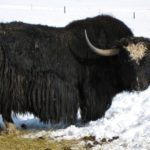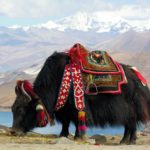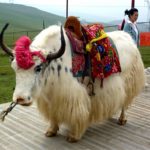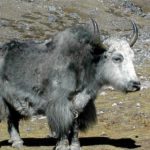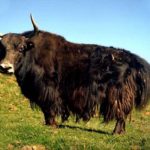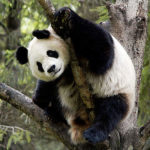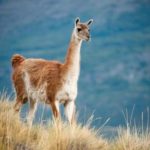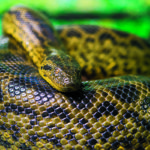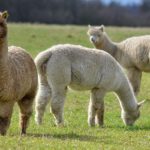Tibetan yaks
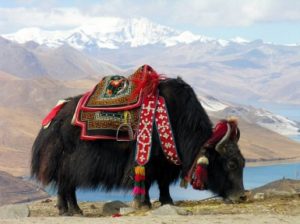 Tibet is an amazing place called the “Roof of the World”. And although the high mountains and pristine lakes are striking in their beauty, it is difficult to move here. And today, as in ancient times, Tibetan yaks carrying heavy loads help people out. These bulls live in Tibet for about ten thousand years. The yak is almost not affected by the rarefied high-mountain air, and it easily drags a load of 150 kilograms along mountain trails, where two people will hardly disperse.
Tibet is an amazing place called the “Roof of the World”. And although the high mountains and pristine lakes are striking in their beauty, it is difficult to move here. And today, as in ancient times, Tibetan yaks carrying heavy loads help people out. These bulls live in Tibet for about ten thousand years. The yak is almost not affected by the rarefied high-mountain air, and it easily drags a load of 150 kilograms along mountain trails, where two people will hardly disperse.
Yak – refers to the genus of bulls, but differs significantly from them in appearance. Tibetan yak is a large, tall animal with a long body and short legs. An adult male can reach a length of up to 4.25 meters, a height of 2 meters, and a weight of up to 1 ton. On the withers there is a small hump, from which the back looks sloping. Long, curving up to 95 centimeters of horns are directed in different directions, and the distance between the ends of the horns can be up to 90 centimeters. On the face, white markings give this animal a special charm. Sometimes for this feature they say that the animal is wearing a mask. The long hair covers the legs, chest, abdomen and sides, forming the so-called “skirt”, and serves as a litter when lying down, and in winter it also saves the undercoat from the cold. Because of this, the yaks can simply lie down and rest in the snow and not feel the cold at all. In the yak, even the tail is protected by long hair and therefore looks like a horse. The coat color is different for them: from pale black to grayish brown.
Yaks are distinguished on domestic and wild. Wilds are called “dumb”, and domestic – “grunting.” Due to the fact that a disgruntled yak can make a sound like a grunting pig. Domestic yaks are much smaller in size. People have been using animals for three thousand years to produce meat, wool, and milk. Their milk is very thick and fat. Therefore, it is made from cheese, sour cream, butter. But more often, yaks are used as a beast of burden or they cultivate land on them for sowing. The domesticated animal is very attached to people. Yak allows you to drive yourself a ring inserted in the nose. It can even protect from wild animals: most often from wolves, which pack in the winter in deep snow. Locals even decorate their bulls and hang on them amulets of embroidered ribbons, beautiful brushes and pompons. Grunting yaks are crossed with other species from the genus of bulls. Females can then give birth to offspring, but for some reason, the males-hybrids “Hajnyki” are fruitless.
Wild Tibetan yaks recently climbed higher, where there are no places mastered by man. Sometimes they rise to a height above 6 thousand meters above sea level. Tibetans call them drong. Such yaks are dangerous for people, especially at the time of injury. The animal rushes at the offender and tries to do away with him. The furious male is formidable, strong, fierce and well armed with strong and long horns and hooves. Beautiful sense of smell allows him to notice the enemy from afar. Worse they have developed organs of hearing and vision. In case of danger, like many of this species of mammals, wild Tibetan yaks stand in a circle and protect babies and weak individuals inside it. Herds of yaks reach 10-12 heads. Then, as in the times of Przhevalsky, hundreds or even thousands were reached. Therefore, wild yaks are now listed in the Red Book.
In Altai, the Yak is called Sarlyk, from the Mongolian word “Sarlag.” He was brought to Altai, Buryatia and Tuva for breeding in agriculture. Animals are widely distributed in Asia and the North Caucasus. It has been observed that yaks can predict earthquakes and changes in climate very well. They refuse to eat about a few hours before the earthquake and begin to worry. Yaks are widely used in farms in the highlands. With their help, they cultivate the land, carry cargo on them, drive, take milk from them.
